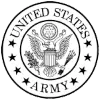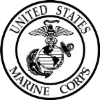Available 24/7
Professional Instruction
Free Training Materials






Course Details
Section 1: Introduction to Data Warehousing
This section provides an introduction to the key components of a data warehousing solution and the high-level considerations students must take into account when starting a data warehousing project.
Topics:
Overview of Data Warehousing
Considerations for a Data Warehouse Solution
Lab 1: Exploring a Data Warehousing Solution
Exploring Data Sources
Exploring and ETL Process
Exploring a Data Warehouse
Section 2: Planning Data Warehouse Infrastructure
This section discusses considerations for selecting hardware and distributing SQL Server facilities across servers.
Topics:
Considerations for Data Warehouse Infrastructure
Planning Data Warehouse Hardware
Lab 1: Planning Data Warehouse Infrastructure
Planning Data Warehouse Hardware
Section 3: Designing and Implementing a Data Warehouse
This section describes the key considerations for the logical design of a data warehouse, and then discusses best practices for its physical implementation.
Topics:
Data Warehouse Design Overview
Designing Dimension Tables
Designing Fact Tables
Physical Design for a Data Warehouse
Lab 1: Implementing a Data Warehouse
Implementing a Star Schema
Implementing a Snowflake Schema
Implementing a Time Dimension
Section 4: Creating an ETL Solution with SSIS
This section discusses considerations for implementing an ETL process, and then focuses on Microsoft SQL Server Integration Services (SSIS) as a platform for building ETL solutions.
Topics:
Introducing ETL with SSIS
Exploring Data Sources
Implementing Data Flow
Lab 1: Implementing Data Flow in an SSIS Package
Exploring Data Sources
Transferring Data by Using a Data Flow Task
Using Transformations in a Data Flow
Section 5: Implementing Control Flow in an SSIS Package
This section describes how to implement ETL solutions that combine multiple tasks and workflow logic.
Topics:
Introduction to Control Flow
Creating Dynamic Packages
Using Containers
Managing Consistency
Lab 1: Implementing Control Flow in an SSIS Package
Using Tasks and Precedence in a Control Flow
Using Variables and Parameters
Using Containers
Lab 1: Using Transactions and Checkpoints
Using Transactions
Using Checkpoints
Section 6: Debugging and Troubleshooting SSIS Packages
This section describes how you can debug packages to find the cause of errors that occur during execution. It then discusses the logging functionality built into SSIS that you can use to log events for troubleshooting purposes. Finally, the section describes common approaches for handling errors in control flow and data flow.
Topics:
Debugging an SSIS Package
Logging SSIS Package Events
Handling Errors in an SSIS Package
Lab 1: Debugging and Troubleshooting an SSIS Package
Debugging an SSIS Package
Logging SSIS Package Execution
Implementing an Event Handler
Handling Errors in a Data Flow
Section 7: Implementing a Data Extraction Solution
This section describes the techniques you can use to implement an incremental data warehouse refresh process.
Topics:
Planning Data Extraction
Extracting Modified Data
Lab 1: Extracting Modified Data
Using a Datetime Column
Using Change Data Capture
Using the CDC Control Task
Using Change Tracking
Section 8: Loading Data into a Data Warehouse
This section describes the techniques you can use to implement data warehouse load process.
Topics:
Planning Data Loads
Using SSIS for Incremental Loads
Using Transact-SQL Loading Techniques
Lab 1: Loading a Data Warehouse
Loading Data from CDC Output Tables
Using a Lookup Transformation to Insert or Update Dimension Data
Implementing a Slowly Changing Dimension
Using the MERGE Statement
Section 9: Enforcing Data Quality
This section introduces Microsoft SQL Server Data Quality Services (DQS), and describes how you can use it to cleanse and deduplicate data.
Topics:
Introduction to Data Quality
Using Data Quality Services to Cleanse Data
Using Data Quality Services to Cleanse Data
Lab 1: Cleansing Data
Creating a DQS Knowledge Base
Using a DQS Project to Cleanse Data
Using DQS in an SSIS Package
Section 10: Master Data Services
Master Data Services provides a way for organizations to standardize data and improve the quality, consistency, and reliability of the data that guides key business decisions. This section introduces Master Data Services and explains the benefits of using it.
Topics:
Introduction to Master Data Services
Implementing a Master Data Services Model
Managing Master Data
Creating a Master Data Hub
Lab 1: Implementing Master Data Services
Creating a Master Data Services Model
Using the Master Data Services Add-in for Excel
Enforcing Business Rules
Loading Data Into a Model
Consuming Master Data Services Data
Section 11: Extending SQL Server Integration Services
This section describes the techniques you can use to extend SSIS. The section is not designed to be a comprehensive guide to developing custom SSIS solutions, but to provide an awareness of the fundamental steps required to use custom components and scripts in an ETL process that is based on SSIS.
Topics:
Using Scripts in SSIS
Using Custom Components in SSIS
Lab 1: Using Custom Scripts
Using a Script Task
Section 12: Deploying and Configuring SSIS Packages
In this section, students will learn how to deploy packages and their dependencies to a server, and how to manage and monitor the execution of deployed packages.
Topics:
Overview of SSIS Deployment
Deploying SSIS Projects
Planning SSIS Package Execution
Lab 1: Deploying and Configuring SSIS Packages
Creating an SSIS Catalog
Deploying an SSIS Project
Running an SSIS Package in SQL Server Management Studio
Scheduling SSIS Packages with SQL Server Agent
Section 13: Consuming Data in a Data Warehouse
This section introduces business intelligence (BI) solutions and describes how you can use a data warehouse as the basis for enterprise and self-service BI.
Topics:
Introduction to Business Intelligence
Enterprise Business Intelligence
Self-Service BI and Big Data
Lab 1: Using a Data Warehouse
Exploring an Enterprise BI Solution
Exploring a Self-Service BI Solution
Please check the course description to find prerequisite information.
MOC On-Demand: 20463-Implementing a Data Warehouse with Microsoft SQL Server
On-Demand Training Course
90/month licence
- 24/7 Access
- Hands-On Practice Exercises
- Free Repeats
- Professional Instruction
Testimonials
This was the class I needed.
The instructor Jeff took his time and made sure we understood each topic before moving to the next. He answered all of our questions, and I don't know about the rest of the students, but was very pleased with this experience.
I finally understand how to use Excel.
-Amanda T (Yale New Haven Hospital).
Great class!
We were able to cover a lot of information in one day without getting overwhelmed.
-Maria R (Microsoft).
Free Repeats
Learn At Your Pace
No Travel
Professional Instruction
Affordable Pricing
Group Discounts

